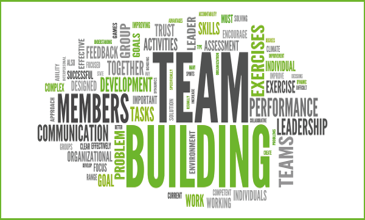Leadership Development: An Introduction

Jimi McManus
Leadership Development: An Introduction
Table of Contents
- Introduction
- Understanding Leadership
- The Importance of Leadership Development
- Key Components of Leadership Development Programs
- Self-Awareness
- Strategic Thinking
- Communication Skills
- Team Building
- Change Management
- Case Studies
- Case Study 1: General Electric
- Case Study 2: Google
- Best Practices in Leadership Development
- Challenges in Leadership Development
- Future Trends in Leadership Development
- Conclusion
- References
- Introduction
Leadership development is a strategic imperative for organizations aiming to thrive in today’s dynamic business environment. Effective leadership is crucial for driving performance, fostering innovation, and navigating complex challenges. This comprehensive guide provides an in-depth introduction to leadership development, covering its significance, key components, and best practices. Through real-world case studies, we illustrate the practical application and impact of robust leadership development programs.
- Understanding Leadership
Leadership is the process of influencing others to achieve common goals. It involves setting a vision, inspiring and motivating individuals, and creating an environment where team members can excel. Leadership is not confined to senior positions; it can emerge at any level within an organization. Key attributes of effective leaders include:
- Visionary Thinking: The ability to set a clear and compelling vision for the future.
- Emotional Intelligence: Understanding and managing one’s emotions and the emotions of others.
- Decision-Making Skills: Making informed and timely decisions that align with organizational goals.
- Integrity: Adhering to ethical principles and building trust through consistent and transparent actions.
- Adaptability: Adjusting strategies and approaches in response to changing circumstances.
- The Importance of Leadership Development
Leadership development is vital for several reasons:
- Organizational Growth: Effective leaders drive organizational growth by setting a strategic direction, making informed decisions, and fostering a culture of continuous improvement.
- Talent Retention: Investing in leadership development enhances employee engagement and retention by providing career advancement opportunities and personal growth.
- Adaptability: Leaders equipped with the skills to navigate change and uncertainty ensure the organization remains resilient and adaptable in a rapidly evolving business landscape.
- Performance Improvement: Leadership development programs enhance leaders’ skills and capabilities, leading to improved team performance, productivity, and overall organizational success.
- Key Components of Leadership Development Programs
Successful leadership development programs typically include the following key components:
Self-Awareness
Self-awareness is the cornerstone of effective leadership. It involves understanding one’s strengths, weaknesses, values, and impact on others. Self-aware leaders are better equipped to manage their emotions, build authentic relationships, and make sound decisions. Tools and techniques to enhance self-awareness include:
- 360-Degree Feedback: Collecting feedback from peers, subordinates, and supervisors to gain a comprehensive view of one’s behavior and performance.
- Personality Assessments: Instruments such as the Myers-Briggs Type Indicator (MBTI) and the Big Five Personality Traits help individuals understand their personality traits and how they influence their leadership style.
- Reflective Practices: Journaling, mindfulness, and meditation encourage leaders to reflect on their experiences and gain insights into their behavior and decision-making processes.
Strategic Thinking
Strategic thinking enables leaders to anticipate future trends, identify opportunities, and develop long-term plans. It involves analyzing complex situations, thinking critically, and making informed decisions that align with the organization’s vision and goals. Developing strategic thinking skills requires:
- Exposure to Diverse Perspectives: Engaging with different viewpoints and learning from various industries and sectors to broaden one’s thinking.
- Scenario Planning: Exploring potential future scenarios and developing strategies to address them.
- Continuous Learning: Staying informed about industry trends, technological advancements, and market dynamics through reading, attending conferences, and participating in professional development programs.
Communication Skills
Effective communication is a vital leadership skill that involves conveying ideas clearly, listening actively, and fostering open dialogue. Leaders must be able to articulate their vision, provide constructive feedback, and inspire their teams. Enhancing communication skills involves:
- Public Speaking Training: Participating in workshops and courses to improve public speaking and presentation skills.
- Active Listening Exercises: Practicing active listening techniques to understand and respond to team members’ concerns and ideas.
- Conflict Resolution Workshops: Learning strategies to manage and resolve conflicts constructively, fostering a collaborative work environment.
Team Building
Team building is the process of creating cohesive and high-performing teams. It involves understanding team dynamics, fostering collaboration, and leveraging individual strengths. Effective leaders create an inclusive environment, encourage diverse perspectives, and resolve conflicts constructively. Developing team-building skills involves:
- Team-Building Activities: Engaging in activities that promote trust, collaboration, and communication among team members.
- Workshops and Training Sessions: Participating in training sessions focused on team dynamics, conflict resolution, and collaborative problem-solving.
- Coaching and Mentoring: Providing guidance and support to team members to help them develop their skills and achieve their potential.
Change Management
Change management is the ability to lead and manage organizational change effectively. It involves planning, implementing, and sustaining change initiatives while addressing resistance and minimizing disruption. Leaders skilled in change management can guide their teams through transitions, maintain morale, and ensure successful outcomes. Developing change management skills involves:
- Training in Change Management Frameworks: Learning and applying change management models such as Kotter’s 8-Step Process, Lewin’s Change Management Model, and the ADKAR Model.
- Stakeholder Engagement: Involving key stakeholders in the change process to gain their support and address their concerns.
- Communication Strategies: Developing effective communication plans to keep employees informed and engaged throughout the change process.
- Case Studies
Case Study 1: General Electric
General Electric (GE) is renowned for its leadership development programs, particularly under the leadership of former CEO Jack Welch. GE’s leadership development initiatives focused on identifying high-potential employees, providing them with challenging assignments, and offering continuous feedback and coaching.
Key Elements of GE’s Leadership Development:
- Crotonville Leadership Institute: GE’s Crotonville campus served as a hub for leadership training, offering courses on strategic thinking, innovation, and change management.
- Stretch Assignments: High-potential employees were given stretch assignments to develop their skills and gain diverse experiences. These assignments involved taking on significant responsibilities in different business units or geographic locations.
- Mentorship and Coaching: GE emphasized the importance of mentorship and coaching, pairing emerging leaders with experienced executives for guidance and support. Mentors provided valuable insights, helped navigate challenges, and facilitated career development.
Impact: GE’s commitment to leadership development contributed to its success in building a strong leadership pipeline, driving innovation, and maintaining a competitive edge in the market. The company produced numerous industry leaders who went on to achieve significant success both within and outside GE.
Case Study 2: Google
Google, known for its innovative culture, has implemented a comprehensive leadership development program to nurture its leaders. Google’s approach emphasizes continuous learning, employee empowerment, and data-driven decision-making.
Key Elements of Google’s Leadership Development:
- g2g (Googler-to-Googler) Program: Google encourages peer-to-peer learning through the g2g program, where employees share their expertise and knowledge with colleagues. This program fosters a collaborative learning environment and allows employees to develop their skills through hands-on experience.
- Project Oxygen: Google conducted extensive research to identify the behaviors of successful leaders within the company. The findings were used to develop training programs focused on coaching, communication, and team management. Key leadership behaviors identified included being a good coach, empowering the team, expressing interest in team members’ well-being, and being results-oriented.
- Leadership Labs: Google offers Leadership Labs, immersive training sessions that simulate real-world challenges and provide leaders with hands-on experience. These labs cover various aspects of leadership, including decision-making, team building, and conflict resolution.
Impact: Google’s leadership development initiatives have fostered a culture of continuous improvement, innovation, and high employee engagement, contributing to its position as a global technology leader. The company’s focus on data-driven decision-making and employee empowerment has resulted in a highly motivated and capable leadership team.
- Best Practices in Leadership Development
Implementing effective leadership development programs involves adhering to best practices:
- Tailored Programs: Leadership development programs should be customized to meet the specific needs and goals of the organization and its leaders. This involves conducting a thorough needs assessment to identify skill gaps and designing programs that address these gaps.
- Continuous Learning: Encourage a culture of continuous learning by providing ongoing training, coaching, and development opportunities. This can include formal training programs, on-the-job learning experiences, and access to online learning resources.
- Feedback and Assessment: Regularly assess the effectiveness of leadership development initiatives through feedback, performance metrics, and evaluations. Use this data to make necessary adjustments and improvements to the programs.
- Diverse Learning Methods: Utilize a variety of learning methods, including workshops, online courses, mentoring, and experiential learning, to cater to different learning styles. Combining different approaches can enhance the learning experience and improve skill retention.
- Leadership at All Levels: Promote leadership development at all organizational levels, not just for senior executives, to build a strong leadership pipeline. Encourage emerging leaders to take on leadership roles and provide them with the necessary support and development opportunities.
- Challenges in Leadership Development
Leadership development programs face several challenges that organizations must address:
- Resistance to Change: Leaders and employees may resist change, hindering the adoption of new leadership practices and behaviors. Addressing resistance requires effective communication, involvement of key stakeholders, and demonstrating the benefits of leadership development.
- Resource Constraints: Limited resources, such as time, budget, and personnel, can impact the effectiveness of leadership development initiatives. Organizations need to prioritize leadership development and allocate sufficient resources to ensure program success.
- Measuring Impact: Quantifying the impact of leadership development programs on organizational performance can be challenging, requiring robust evaluation methods. Organizations should establish clear metrics and use both qualitative and quantitative data to assess the effectiveness of their programs.
- Maintaining Engagement: Ensuring sustained engagement and participation in leadership development programs can be difficult, especially in a fast-paced work environment. Organizations should create engaging and relevant programs, provide incentives for participation, and continuously communicate the value of leadership development.
- Future Trends in Leadership Development
The field of leadership development is continually evolving, with several emerging trends shaping its future:
- Digital Learning: The use of digital platforms, virtual reality, and AI-powered tools for leadership training is on the rise, offering flexible and personalized learning experiences. These technologies enable leaders to access training materials anytime, anywhere, and engage in interactive and immersive learning experiences.
- Inclusive Leadership: Emphasizing diversity and inclusion in leadership development programs to create more equitable and representative leadership teams. Organizations are recognizing the importance of developing leaders who can foster inclusive environments and leverage diverse perspectives for better decision-making.
- Agile Leadership: Developing leaders who can adapt quickly to changing circumstances, embrace innovation, and lead with agility in dynamic environments. Agile leadership development programs focus on enhancing leaders’ ability to respond to uncertainty, drive continuous improvement, and foster a culture of innovation.
- Well-being and Resilience: Integrating well-being and resilience training into leadership development to support leaders in managing stress, maintaining work-life balance, and fostering a positive work culture. This involves providing leaders with tools and strategies to enhance their physical, mental, and emotional well-being.
- Data-Driven Development: Leveraging data analytics to identify leadership potential, track progress, and tailor development programs to individual needs. Organizations are increasingly using data to make informed decisions about leadership development, measure program effectiveness, and customize learning experiences.
- Conclusion
Leadership development is a critical investment for organizations aiming to achieve long-term success and sustainability. By understanding the key components, implementing best practices, and addressing challenges, organizations can cultivate effective leaders who drive performance, innovation, and positive change. The evolving landscape of leadership development presents new opportunities for organizations to embrace innovative approaches and prepare their leaders for the future.
- References
- Day, D. V. (2001). Leadership Development: A Review in Context. Leadership Quarterly, 11(4), 581-613.
- Goleman, D. (1998). What Makes a Leader? Harvard Business Review, 76(6), 93-102.
- Kotter, J. P. (1996). Leading Change. Harvard Business Review Press.
- Kouzes, J. M., & Posner, B. Z. (2012). The Leadership Challenge: How to Make Extraordinary Things Happen in Organizations. Jossey-Bass.
- McCall, M. W. (2010). Recasting Leadership Development. Industrial and Organizational Psychology, 3(1), 3-19.
- Tichy, N. M., & Cardwell, N. (2002). The Cycle of Leadership: How Great Leaders Teach Their Companies to Win. Harper Business.
This detailed blog post provides an in-depth introduction to leadership development, emphasizing its importance, key components, and best practices. Through real-world case studies and a forward-looking perspective on emerging trends, organizations can better understand how to cultivate effective leaders and achieve sustained success.
About the Author
Jimi McManus
Chief Transformation & Operations Officer | COO | Freelance Contractor at Mindy's Executive Coaching, LLC. Jimi McManus is a dynamic and innovative professional with a rich history of achievements in technology and business transformation. With over 20-years experience, Jimi has carved a niche in leading Agile, business, and digital transformations, cross-functional teams, and driving strategic initiatives that streamline operations and foster growth. A graduate of Watterson College Pacific, Jimi's career began in San Diego with General Telephone and Equipment (GTE), where he quickly became known for his adeptness at navigating the complexities of tech start-ups and scaling operations to meet market demands. His expertise spans Artificial Intelligence (AI), coaching, mentoring, teaching, training, Lean Portfolio Management, product development and management, software development, program/project management, and Agile, business, and digital transformation, making him a sought-after consultant for Fortune 50 companies and up as well as any entity looking to modernize their infrastructures and enhance their digital capabilities. Beyond his professional endeavors, Jimi is passionate about mentoring the next generation of tech leaders. He actively participates in industry conferences, sharing his insights on emerging technologies and the future of work. Known for his hands-on approach and collaborative spirit, Jimi inspires those around him to strive for excellence and innovation. In his spare time, Jimi enjoys being outdoors (biking, hiking, golfing, paddle boarding, etc.) drawing parallels between the creativity in his outdoor endeavors and the innovative solutions he develops in his professional life. Whether he's on stage performing or in the boardroom strategizing, Jimi's unique blend of technical prowess and creative thinking sets him apart as a leader and visionary.Categories
Recent Posts

Team Building: An Introduction to the New Blog
Team Building

Leadership Development: An Introduction Presented by MEC’s Leadership Development Apostle
Leadership Development: An Introduction

Christian-Based Foundational Principles of Executive Coaching – Presented by Mindy’s Executive Coaching, LLC’s Salt of the Earth’s EC Apostle
Christian Executive Coaching Foundational Principles of Executive Coaching

Artificial Intelligence (A.I.) and Lean Portfolio Management? An Introduction – Brought to You by the LPM Apostle
A.I. and Lean Portfolio Management

Christian Executive Coaching Blog: Introduction to Christian Executive Coaching Presented by Mindy’s Executive Coaching, LLC’s EC Apostle
Executive Coaching Blog: Christian Executive Coaching



